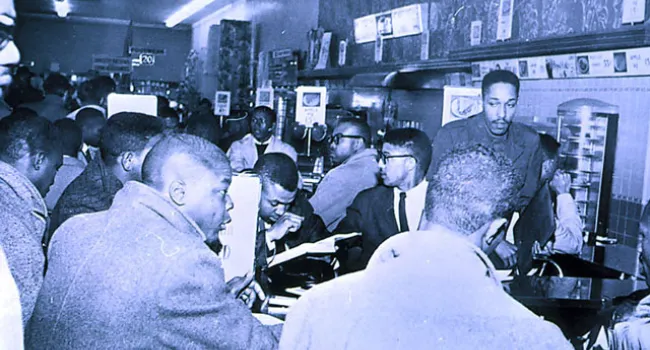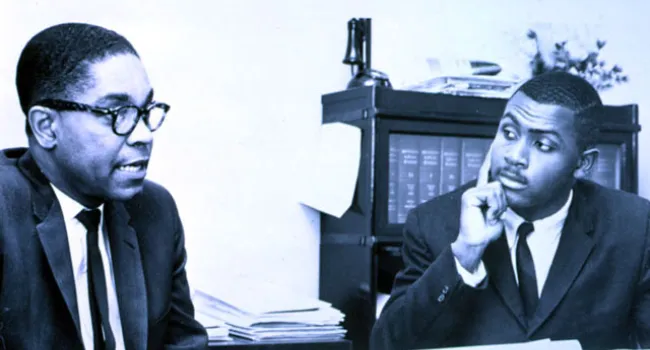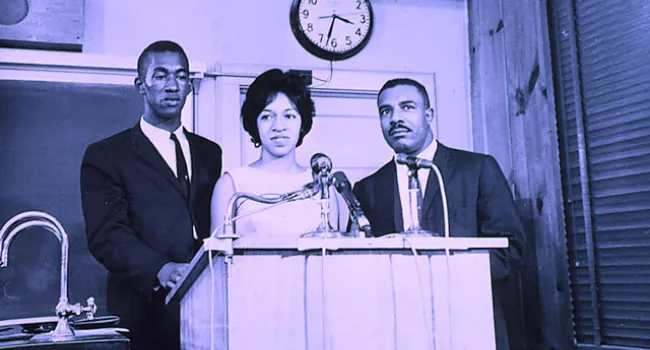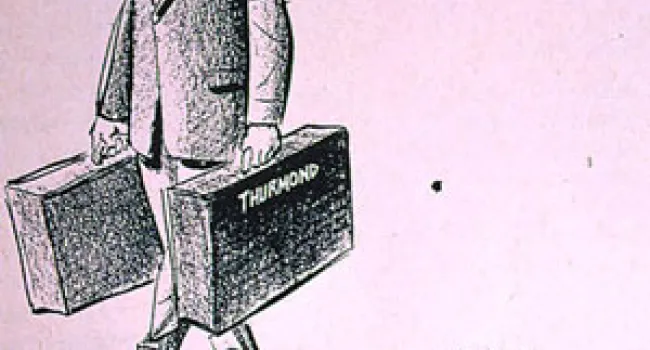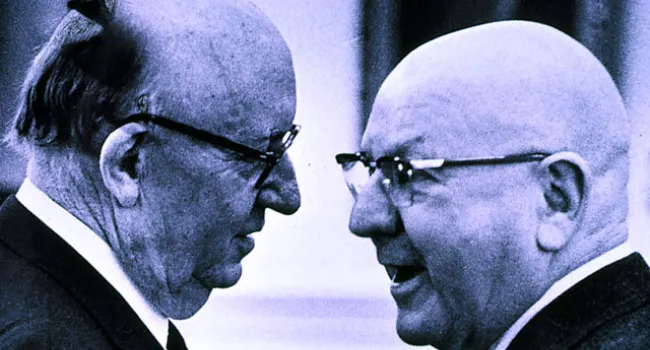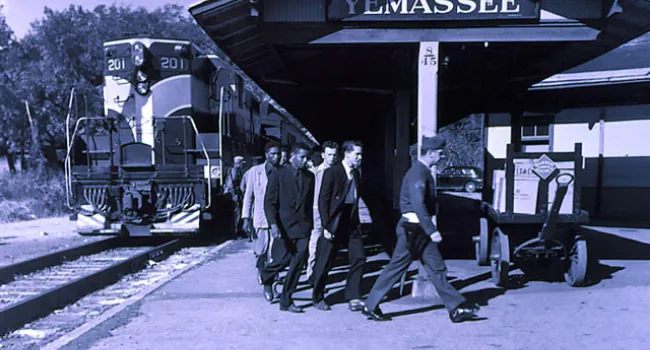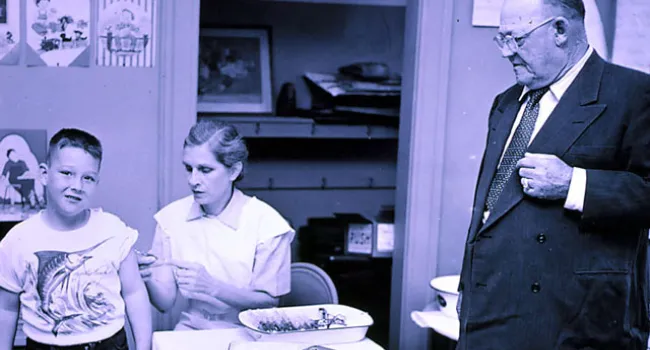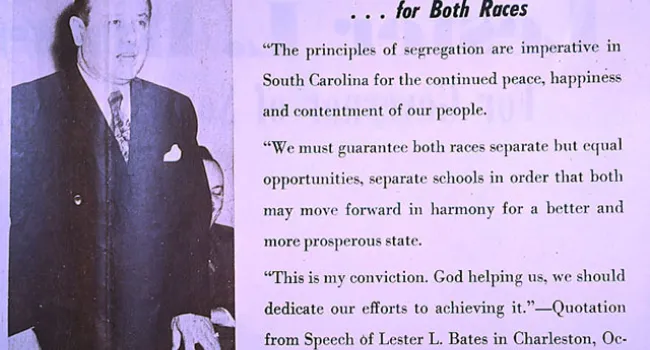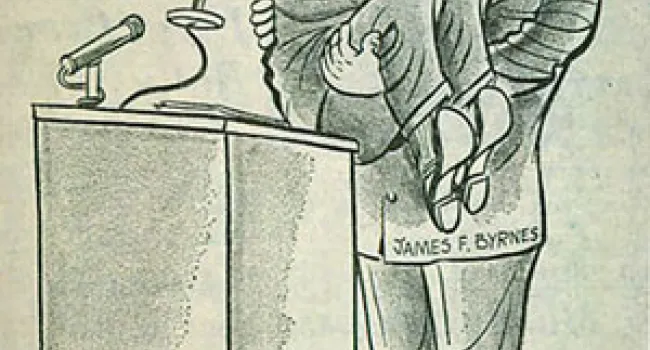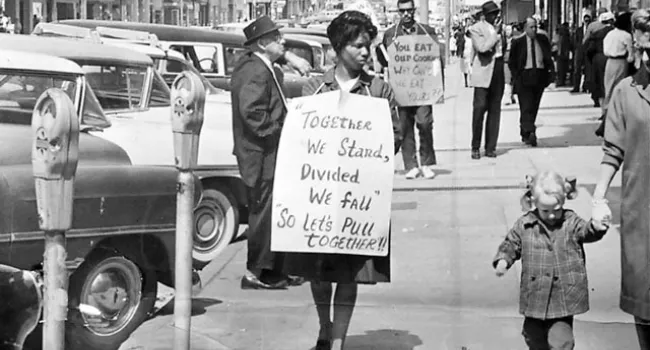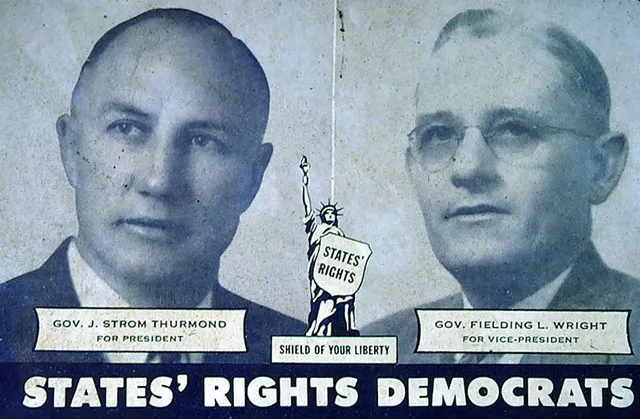
Postwar politics in South Carolina were affected by the many changes that the war had brought. Many new citizens flocked to the state, partly because of the many military bases there, and partly because of the expansion of state industries in the war effort. These newcomers did not always share loyalty to the Democratic Party or the predominant racial attitudes of their new home. African-Americans, who had fought in segregated units in Europe against a Germany that had carried out a race war, were determined to raise the status of their own race at home. When President Truman tried to lead the nation and the Democratic Party in new directions, including putting an end to segregation of the armed forces, many South Carolinians were ready to end the old political system that had dominated the state since Reconstruction. Strom Thurmond, governor from 1947-1951 and later a U.S. Senator, became an important leader in the Dixiecrat movement in 1948, which expressed southern opposition to national Democratic Party goals. As the Dixiecrat candidate for President in that year, Thurmond hoped to get enough votes to throw the election into the House of Representatives. He won the electoral college votes of four states.
Courtesy of the Edgefield County Historical Society.
Standards
- 5.3 Demonstrate an understanding of the economic, political, and social effects of World War II, the Holocaust, and their aftermath (i.e., 1930–1950) on the United States and South Carolina.
- This indicator was designed to promote inquiry into military and economic policies during World War II, to include the significance of military bases in South Carolina. This indicator was also developed to foster inquiry into postwar economic developments and demographic changes, to include the immigration of Jewish refugees following the Holocaust.
- This indicator was designed to foster inquiry into the role of South Carolina in the Modern Civil Rights Movement, to include the influence of court cases such as Briggs v. Elliot and Flemming v. South Carolina Electric and Gas. This indicator was also developed to promote inquiry into the relationship between national leadership, protests, and events and South Carolina leadership, protests and events, such as the Friendship Nine and the Orangeburg Massacre.
